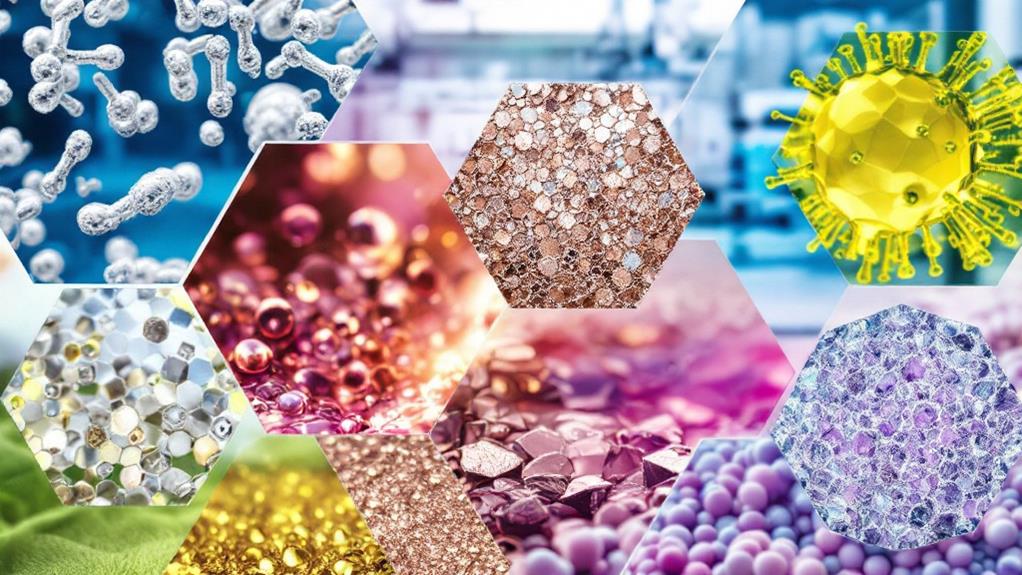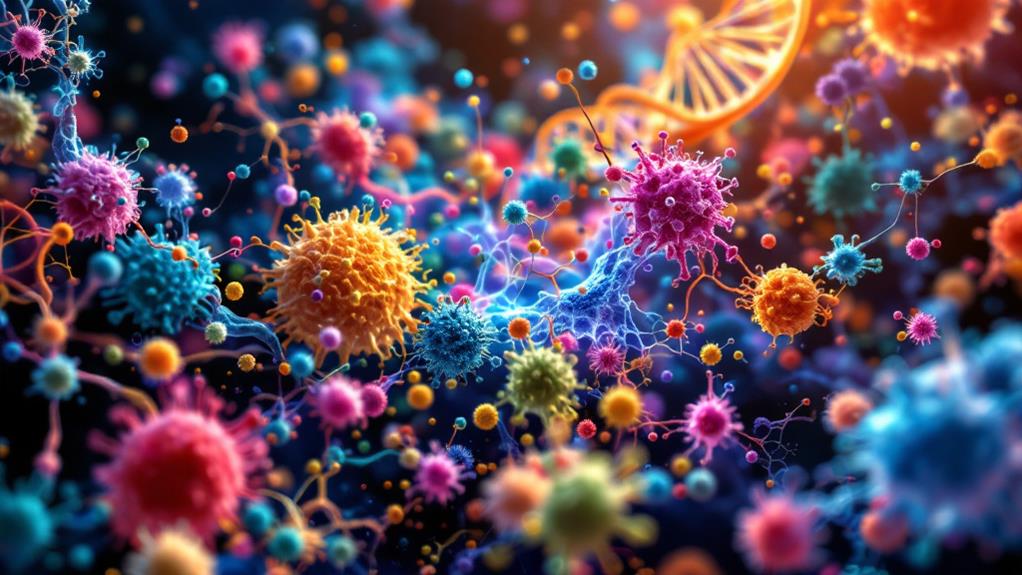What Does Antibacterial Material Mean? Understanding How It Works

Antibacterial materials are substances designed to stop bacteria from growing or surviving on surfaces. You're likely to find them in healthcare settings, textiles, and consumer products. They work by disrupting key bacterial functions like cell wall synthesis, damaging DNA, or causing membrane leaks. These materials might include metals like silver or copper, and they're incredibly useful in preventing infections and promoting hygiene. Each type offers different solutions based on their composition and intended use. Curious about how these materials revolutionize hygiene and safety across different environments? There's more to uncover about their fascinating applications and benefits.
Definition of Antibacterial Material
An antibacterial material is any substance specifically designed to inhibit the growth or destroy bacteria. When you think about these materials, imagine surfaces that actively prevent bacteria from multiplying. They do this through their unique antibacterial properties, which make them invaluable in numerous settings, from hospitals to kitchens. By using such materials, you're fundamentally creating a barrier that helps maintain a cleaner and safer environment.
When evaluating these materials, consider their effectiveness. Not all antibacterial materials are created equal; their ability to combat bacteria differs. Some might be more suitable for certain applications than others, depending on the type of bacteria and the environment in which they're used. For instance, a material's effectiveness can be influenced by factors such as the concentration of the antibacterial agent or how it's incorporated into the material.
Understanding these properties helps you choose the right antibacterial material for your needs. Regardless of it being a coating on your kitchen counter or a fabric in a hospital gown, knowing how these materials work and their effectiveness in different conditions guarantees that you're making informed decisions to protect yourself and others from harmful bacteria.
Mechanisms of Action
When you investigate the mechanisms of action for antibacterial materials, you'll find they work in fascinating ways to combat bacteria. These materials disrupt bacterial processes, fundamentally halting their ability to grow or survive. One common mechanism involves interrupting the bacterial cell wall synthesis. By compromising this significant structure, the bacteria become vulnerable and eventually perish. Others work by penetrating the cell membrane, leading to leakage of important cellular components, effectively killing the bacteria.
Additionally, some antibacterial materials generate reactive oxygen species (ROS), which can damage bacterial DNA, proteins, and lipids. This oxidative stress overwhelms the bacteria's defenses, leading to their destruction. Antibacterial materials can also bind to bacterial enzymes, rendering them inactive and preventing the bacteria from carrying out crucial life processes.
Material innovations play a key role in overcoming antibacterial resistance, a growing concern. Advanced materials are being engineered to target multiple bacterial pathways simultaneously, reducing the chance for bacteria to develop resistance. These innovations guarantee that even as bacteria evolve, the antibacterial materials can adapt and remain effective. By understanding these mechanisms, you can appreciate how these materials contribute to a healthier environment by curbing bacterial threats.
Types of Antibacterial Materials

Among the varied landscape of antibacterial materials, you'll find several types designed to immerse into bacterial threats effectively. Natural antibacterial materials, like crucial oils and plant extracts, harness the inherent properties of nature to fend off bacteria. They're often favored for being eco-friendly and less harsh on the environment. On the other hand, synthetic antibacterial materials are crafted in labs to target specific bacterial strains. These materials are engineered for precision, offering a tailored approach to combating bacterial growth.
Metal based antibacterial materials, such as those incorporating silver, copper, or zinc, are known for their potent antibacterial properties. They work by releasing ions that disrupt bacterial cell functions, making them a popular choice for numerous applications that require robust protection. These metals' longevity and effectiveness make them a staple in the antibacterial arsenal.
Polymeric antibacterial materials come into play when durability and flexibility are needed. These materials can be infused with antibacterial agents and are often used in coatings, films, or fibers. They offer a versatile solution, allowing for long-lasting and adaptable protection in assorted settings. Exploring these types gives you a thorough view of how different materials tackle bacterial challenges.
Applications in Healthcare
Exploring the diverse types of antibacterial materials highlights their significant role in healthcare applications. Imagine a hospital where every surface actively works to reduce infections. Antibacterial materials make this possible by offering effective infection control solutions. From surgical instruments to hospital bed linens, these materials help prevent the spread of harmful bacteria. They're not just about killing germs but also about ensuring a safer environment for patients and healthcare professionals alike.
You'll find material innovation at the core of these applications. Scientists are constantly developing new materials that are more efficient and durable. For example, silver nanoparticles are often used for their powerful antibacterial properties. They're integrated into medical devices and coatings that you might encounter in a hospital setting. Copper alloys are another example, known for their ability to eliminate bacteria upon contact, making them ideal for high-touch surfaces like door handles and railings.
Everyday Uses and Benefits

Antibacterial materials aren't just confined to healthcare settings; they have numerous everyday uses that make our lives safer and more convenient. Imagine your kitchen surfaces being less of a breeding ground for bacteria. Antibacterial coatings can be applied to countertops and cutting boards, reducing the risk of foodborne illnesses. In clothing fabrics, these materials help minimize odors and keep your clothes fresher for longer, especially activewear.
Personal care products, like toothbrushes and hairbrushes, often incorporate antibacterial elements to maintain hygiene and reduce contamination. In home cleaning, antibacterial sprays, and wipes are staples, effectively tackling germs on different surfaces and giving you peace of mind.
Public spaces, such as schools, offices, and transportation hubs, benefit from antibacterial materials by reducing the spread of germs. Door handles, desks, and seating areas can be treated to promote a cleaner environment. Even medical devices used at home, like thermometers or blood pressure monitors, can incorporate antibacterial materials to improve safety and hygiene.
Future of Antibacterial Materials
What lies ahead for antibacterial materials in a rapidly evolving world? You're about to witness a transformative phase driven by emerging technologies and sustainability considerations. As the demand for safer, more efficient antibacterial solutions grows, scientists are exploring advancements like nanotechnology and smart materials. These developments promise to improve the effectiveness of antibacterial properties while reducing the reliance on harmful chemicals.
Imagine materials that adjust their antibacterial action based on environmental cues or those integrated into everyday objects, providing long-lasting protection without constant human intervention. These smart materials could revolutionize industries from healthcare to consumer goods, making our lives safer and more convenient.
Sustainability considerations are crucial too. You'll see a shift towards biodegradable and eco-friendly antibacterial materials, addressing environmental concerns while maintaining efficacy. Researchers are focusing on materials that not only combat bacteria but also minimize ecological footprints. This dual focus guarantees that the future of antibacterial materials aligns with global sustainability goals.
As you navigate this future landscape, keep an eye on these groundbreaking paths. They're set to redefine how antibacterial materials are developed and used, ultimately shaping a cleaner, safer world for everyone.



